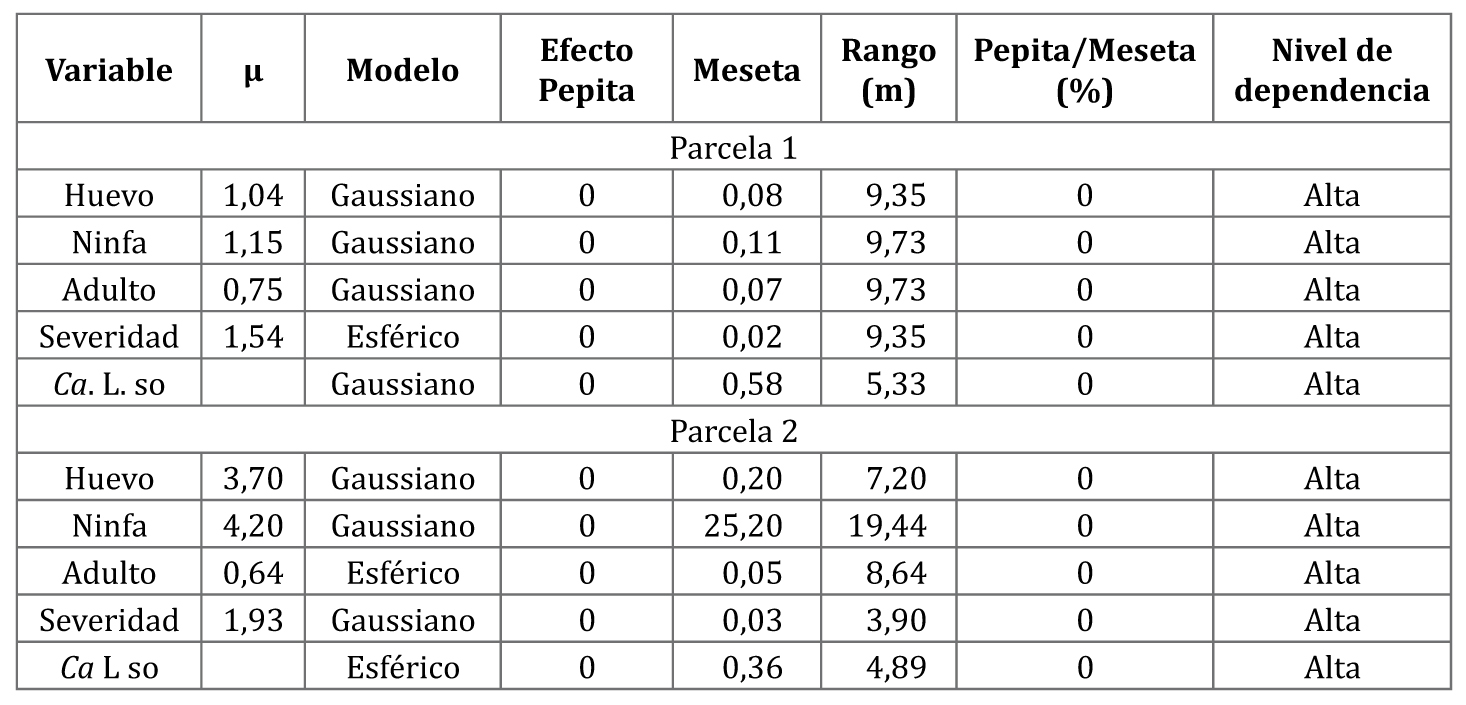Zebra chip spatial behavior and Bactericera cockerelli (Sulc) (Hemiptera: Triozidae) in Solanum tuberosum L. in valleys high of Mexico
Keywords:
Candidatus Liberibacter solanacearum, Bactericera cokerelli, aggregation, krigingAbstract
In Mexico potato production is affected by the disease Zebra chip; which it caused by the bacterium Candidatus Liberibacter solanacearum and is vectored by the psyllid Bactericera cockerelli. The objective of this research was to determine the spatial behavior of Zebra chip and Bactericera cockerelli with geostatistical techniques and bacterium detection using molecular techniques. In 2013 two commercial plots were selected cultivated with the variety Fianna; a total of 121 points were sampled every 10 m using the method of grid, in wich each plant was georeferenced. The incidence of the disease was determined by the symptoms observed in the field; the molecular detection of bacterium was performed using Lp 1-25F Frag/427R primers. The disease incidence in plot 1 was 30% and 25% in plot 2; the bacterium was detected in 27% of plants where symptoms were presented and in 14% of asymptomatic ones. The spatial distribution of the disease, the pathogen and the vector was presented in an aggregated form, adjusting the gaussian and spherical model. In parcel 2, the aggregation centers of the adult stage and the bacterium showed the same location.

Downloads
Published
Issue
Section
License
Aquellos autores/as que tengan publicaciones con esta revista, aceptan las Políticas Editoriales.


